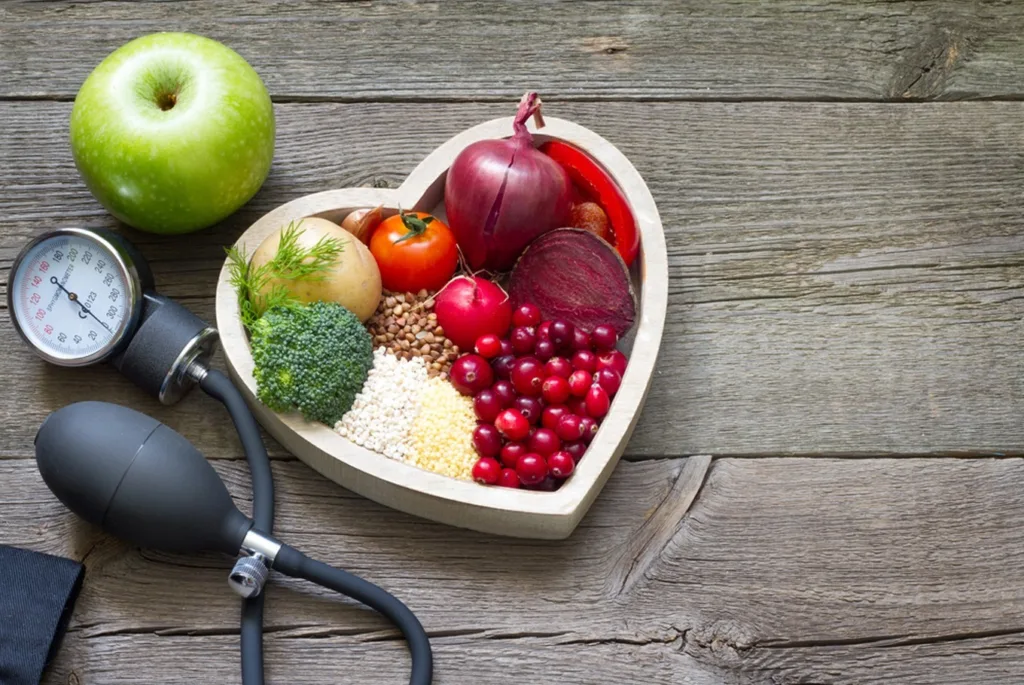High-Intensity Interval Training stands out as a strong tool for maximum fat burn due to its versatility, and ability to be done both during and after exercise. When performed correctly and with consideration for individual fitness levels, HIIT can provide a time-effective and impactful solution for those looking to achieve their fat loss and fitness. It’s important to note that while HIIT can be highly effective for fat burning, it may not be suitable for everyone. Beginners or those with certain health conditions should consult with a healthcare professional or fitness expert before incorporating HIIT into their routine. Proper warm-up and cool-down periods are essential to prevent injuries.

Efficient Time Utilization:
It involves short, intense bursts of exercise followed by small rest periods. Efficient time utilization for fitness involves strategic planning, a focus on high-impact activities, and the addition of healthy habits into daily routines. By adopting these practices, individuals can maximize the benefits of their workouts while minimizing their time investment. Maximizes fat burn within a shorter workout duration compared to traditional steady-state cardio. Efficient time utilization is a skill that can be developed through prioritization, and regular effort.

1. Prioritize Workouts:
- Identify the most effective exercises for your fitness goals.
- Focus on compound movements to target multiple muscle groups in a single session.
- Allocate more time to high-impact workouts for maximum efficiency.
2. Structured Planning:
- Create a weekly workout schedule to ensure consistency.
- Plan both aerobic and strength training sessions to achieve a well-rounded fitness routine.
- Allocate specific time slots for workouts to avoid conflicts with other commitments.
3. Interval Training:
- Embrace high-intensity interval training (HIIT) for time-efficient and effective workouts.
- Alternating between short bursts of intense exercise and rest periods maximizes calorie burn and improves cardiovascular health.
4. Incorporate Circuit Training:
- Combine strength and cardio exercises into a circuit for a time-efficient full-body workout.
- Minimize rest between exercises to keep the heart rate elevated, promoting calorie expenditure and muscle engagement.
5. Home Workouts:
- Utilize at-home workout routines for days when going to the gym is not possible.
- Invest in basic fitness equipment to enhance the variety of exercises available for home workouts.
6. Efficient Cardio Sessions:
- Opt for high-intensity cardio exercises like running, cycling, or rowing for shorter yet effective sessions.
- Utilize interval-based cardio workouts to maximize calorie burn in a limited time.
7. Set Realistic Goals:
- Establish achievable fitness goals to stay motivated.
- Break down larger goals into smaller, manageable tasks to track progress efficiently.
8. Nutritional Planning:
- Plan and prepare nutritious meals in advance to avoid wasting time on unhealthy food choices.
- Optimize nutrient intake to support energy levels and muscle recovery.
9. Utilize Technology:
- Explore fitness apps and online platforms for guided workouts.
- Set reminders for workout sessions to stay accountable and consistent.
Preservation of Lean Muscle Mass:
HIIT emphasizes short bursts of intense effort, preserving muscle mass while promoting fat loss. Traditional cardio may lead to muscle loss, but HIIT helps maintain and even build muscle due to its anaerobic nature. Maintaining lean muscle mass is not only essential for a toned and sculpted physique but also plays a significant role in overall health and functionality. By prioritizing these factors, you can achieve and maintain a strong, toned physique while supporting your overall health and well-being. Lean muscle mass refers to the portion of the body’s total muscle mass that is devoid of excess fat. Building and maintaining lean muscle mass is a key goal for many individuals pursuing fitness and athletic performance. This process involves a combination of proper nutrition and targeted exercise.
Increased Caloric Expenditure:
HIIT elevates heart rate and engages multiple muscle groups at the same time, resulting in a higher caloric burn during and after the workout. Increased caloric expenditure is a fundamental component of achieving and maintaining optimal fitness levels. This process involves burning more calories than consumed, leading to a calorie insufficiency that prompts the body to utilize stored energy, subsequently promoting weight loss and overall well-being. Incorporating strategies to boost caloric expenditure is crucial for those seeking to enhance their fitness journey, as it contributes to improved cardiovascular health, increased endurance, and a more efficient metabolism. Contrary to common belief, strength training also contributes significantly to increased caloric expenditure. While the immediate calorie burn during a strength training session may be lower than that of cardio, the long-term effects are substantial. Muscle tissue requires more energy at rest than fat tissue, meaning that as muscle mass increases; the body burns more calories even when not actively exercising. Additionally, strength training helps prevent muscle loss during weight loss, ensuring that the weight lost primarily comes from fat.

Flexibility in Exercises:
HIIT can be adapted to various forms of exercise, including running, cycling, bodyweight exercises, and even weight training. Keep your flexibility routine diverse by incorporating a variety of stretches and exercises. Flexibility is an important part of overall fitness that often takes a back seat to more traditional forms of exercise such as strength training and cardiovascular workouts. However, incorporating flexibility exercises into your fitness routine is essential for maintaining joint health, preventing injuries, and improving overall mobility. Flexibility refers to the ability of your muscles and joints to move through their full range of motion. It is a key element in functional fitness, allowing you to perform daily activities with ease and reducing the risk of strains and sprains. This not only prevents boredom but also ensures that you target different muscle groups from various angles, promoting overall flexibility. This versatility allows individuals to choose activities they enjoy, increasing adherence to the workout routine. Yoga and Pilates are excellent forms of exercise that emphasize flexibility, balance, and core strength. Yoga, in particular, includes a variety of poses and stretches that target different muscle groups. Integrating yoga or Pilate’s session into your weekly routine can significantly enhance your overall flexibility and promote relaxation.
Adaptability to Fitness Levels:
HIIT workouts can be modified to accommodate different fitness levels. Beginners can start with shorter intervals and lower intensity, gradually progressing as fitness improves. Fitness levels vary widely among individuals, influenced by factors such as age, health conditions, prior exercise experience, and lifestyle. Recognizing this diversity is the first step toward creating an inclusive and adaptable fitness environment. Some may be seasoned athletes looking to push their limits, while others may be beginners seeking a gentle introduction to physical activity. Tailoring workouts to address these differences is crucial for long-term adherence and success. Adaptability in fitness programming revolves around the concept of customization. Rather than adhering strictly to pre-determined routines, trainers and fitness enthusiasts alike should adopt an approach that allows for modification based on individual capabilities and goals. This might involve adjusting exercise intensity, modifying movements, or incorporating alternative activities to suit each person’s fitness level.

Heart Health Benefits:
It has been linked to improved cardiovascular health by enhancing heart function and reducing risk factors such as high blood pressure and cholesterol levels. Combining fat loss with cardiovascular benefits contributes to overall well-being. Maintaining a regular fitness routine is not just about achieving a sculpted physique; it plays a pivotal role in promoting overall health, with a special emphasis on heart health. Engaging in physical activity offers a myriad of benefits that contribute to a robust cardiovascular system, reducing the risk of heart-related ailments. From improved circulation to enhanced cardiac function, the positive impact of fitness on heart health cannot be overstated.

Enhanced Cardiovascular Efficiency:
Regular exercise, especially aerobic activities like jogging, swimming, or cycling, strengthens the heart muscle. As the heart becomes more efficient, it can pump blood more effectively throughout the body, supplying vital oxygen and nutrients to various organs and tissues. This enhanced cardiovascular efficiency lowers the workload on the heart, reducing the risk of conditions such as hypertension and atherosclerosis.
Improved Blood Lipid Profiles:
Engaging in fitness routines positively influences lipid profiles, regulating levels of cholesterol and triglycerides. Regular physical activity helps increase high-density lipoprotein (HDL or “good” cholesterol) while lowering low-density lipoprotein (LDL or “bad” cholesterol) and triglyceride levels. Maintaining a balanced lipid profile is crucial in preventing the buildup of arterial plaques, thus reducing the risk of coronary artery disease.
Weight Management and Obesity Prevention:
Maintaining a healthy weight is integral to heart health. Regular exercise aids in weight management by burning calories and promoting fat loss. Obesity is a known risk factor for heart disease, and by incorporating fitness into one’s lifestyle, individuals can significantly reduce the likelihood of developing obesity-related cardiovascular issues.
Blood Pressure Regulation:
One of the most immediate benefits of regular physical activity is its positive impact on blood pressure. Exercise helps regulate blood pressure by promoting the dilation of blood vessels, allowing for smoother blood flow. This, in turn, reduces the strain on the heart and lowers the risk of hypertension, a major contributor to heart disease.


